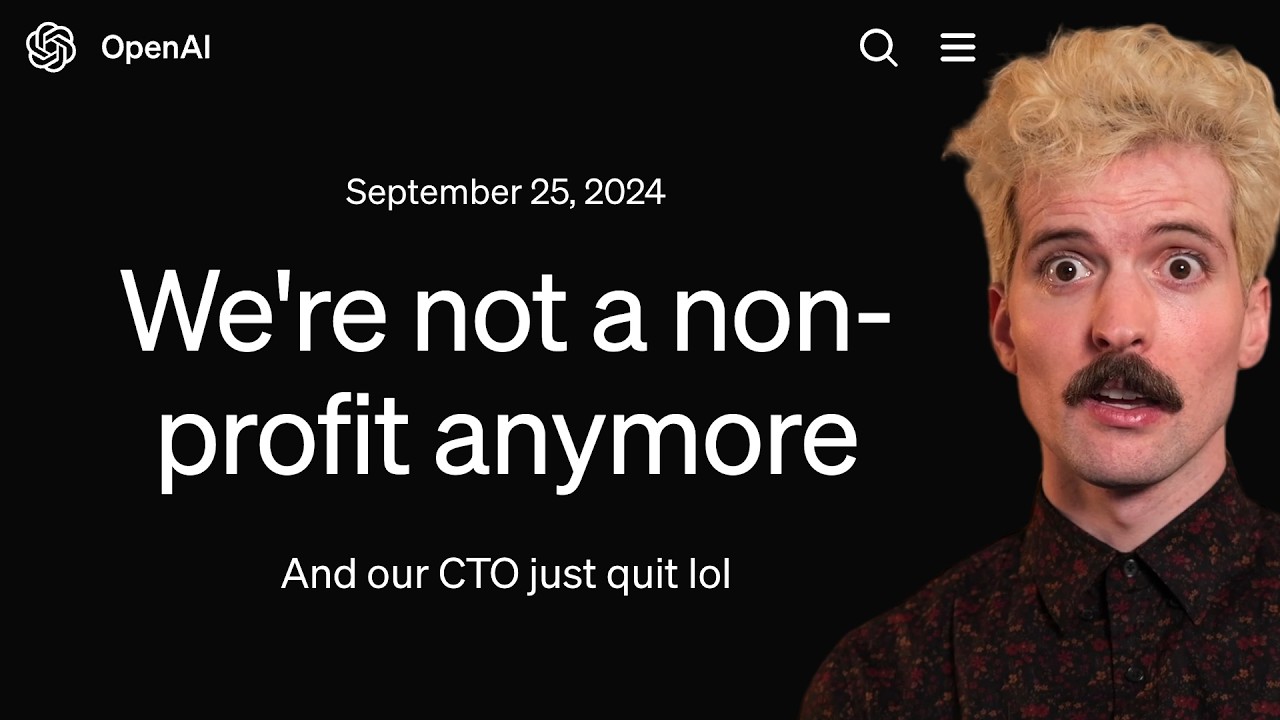The video discusses OpenAI’s transition from a nonprofit to a for-profit benefit corporation, raising concerns about its commitment to safe and equitable AI development as it prioritizes financial returns and attracts traditional investors. This restructuring, along with leadership changes and the disbanding of the super alignment team, has led to skepticism about whether OpenAI can uphold its original mission amidst a focus on profitability.
The video discusses a significant shift in OpenAI’s structure, transitioning from a nonprofit organization to a for-profit benefit corporation. This change has been anticipated by many who have criticized OpenAI for not being truly “open,” as the company has not open-sourced its models, limiting users’ ability to run them independently. Despite OpenAI’s extensive documentation and research contributions, the company has primarily operated as a closed-source entity, which has raised concerns about its commitment to its original mission of ensuring AI benefits all of humanity.
The restructuring is particularly notable as it allows OpenAI to attract traditional investors without the previous profit caps that limited returns. Previously, investors could only earn a maximum of 10 times their investment, but the new structure removes these restrictions, potentially leading to significant financial gains for stakeholders, including CEO Sam Altman, who now stands to gain substantial equity in the company. This shift raises questions about the balance between profit motives and the safety and accessibility goals that were foundational to OpenAI’s creation.
The video highlights the implications of this restructuring on AI safety and governance. OpenAI was initially formed to prevent the monopolization of powerful AI technologies by a few wealthy companies and to ensure that AI development was conducted safely. However, with the nonprofit board losing control over the for-profit entity, there are concerns that the focus on profit could undermine these safety goals. The disbanding of the super alignment team, which was dedicated to ensuring AI safety, further exacerbates these worries.
The departure of key figures, including CTO Mira Murati, adds to the uncertainty surrounding OpenAI’s future direction. The leadership changes, coupled with the restructuring, suggest a shift towards a more traditional startup model, which may prioritize rapid growth and profitability over the original mission of safe and equitable AI development. This has led to skepticism among AI safety advocates about whether OpenAI can maintain its commitment to its founding principles.
In conclusion, the video captures the dramatic evolution of OpenAI from a nonprofit focused on safe AI for all to a for-profit entity that may prioritize financial returns. The implications of this shift are profound, raising concerns about the potential risks associated with AI development and the accessibility of powerful AI technologies. As OpenAI navigates this transition, the community is left to ponder the future of AI governance and the balance between innovation and safety.
